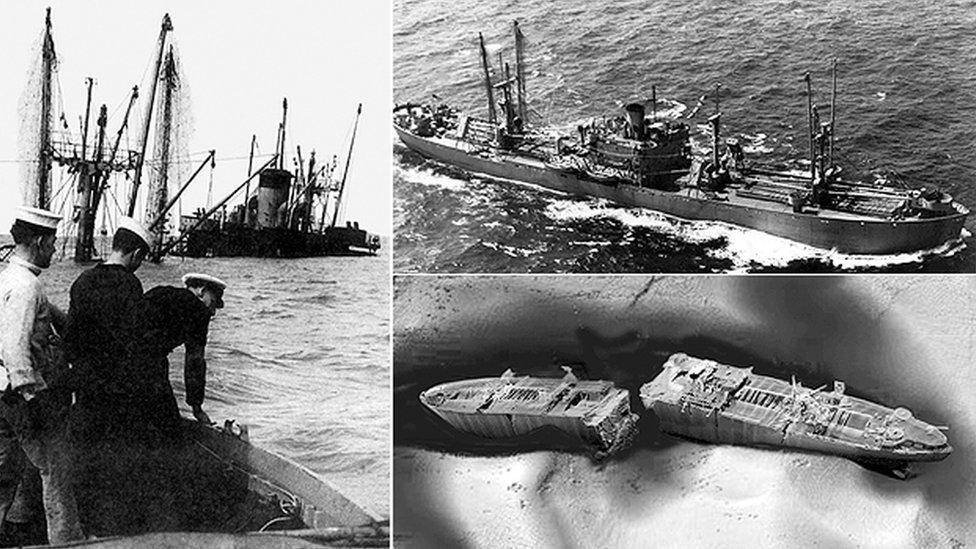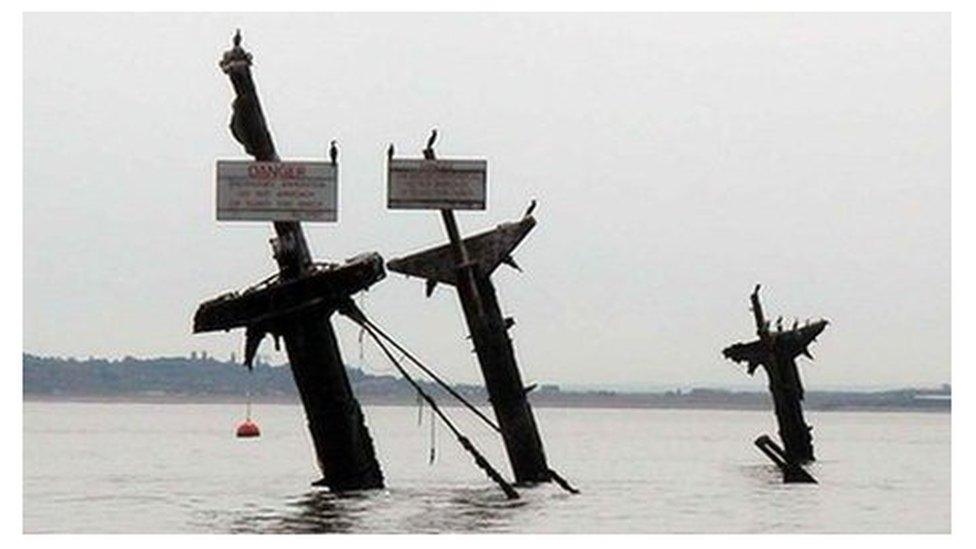Masts to be cut from Thames Estuary wreck packed with explosives
- Published

The SS Richard Montgomery was anchored in Sheerness when it grounded and broke up in 1944 and now lies under the water on a sandbank (pictured bottom right)
The masts are set to be cut from a wartime shipwreck in the Thames Estuary that is packed with 1,400 tonnes of explosives.
Cargo ship SS Richard Montgomery was anchored in Sheerness, Kent, when it grounded and broke up in 1944.
The wreck and its cargo is monitored round the clock by port authorities and protected by a 500-metre exclusion zone.
A contractor is being sought for the £5m project.

The masts of the wrecked ship are visible from the shore
The Department for Transport said in a letter to an Essex MP that the height of the masts, which are visible above the water line, might have to be reduced because they could be "placing undue strain on the rest of the vessel structure".
The letter from aviation, maritime and security minister Kelly Tolhurst to James Duddridge, MP for Rochford and Southend East, said: "This forms part of our ongoing strategy to ensure risks posed by the vessel are suitably managed."

Sonar images show the wreck in two pieces on a sandbank about 1.2 miles (2km) off the coast of Sheerness
Concerns about the explosives on board the wreck were last year raised at Westminster by Labour peer Lord Harris of Haringey, who said: "Why is the government so relaxed about thousands of such bombs and shells deteriorating together in an unstable environment, unguarded and unprotected?"
Tory frontbencher Baroness Barran said most of the explosives still aboard the sunken vessel were TNT, which "is likely to be inert because of the fuses having degraded over time".

The last moments of the SS Richard Montgomery
The Maritime and Coastguard Agency, which monitors the condition of the wreck and carries out regular surveys, said at the time that the risk of a major explosion was "believed to be remote".
The contract to cut the wreck's masts is intended to be awarded in September.
- Published28 June 2013
.jpg)
- Published30 May 2012

- Published6 September 2011
